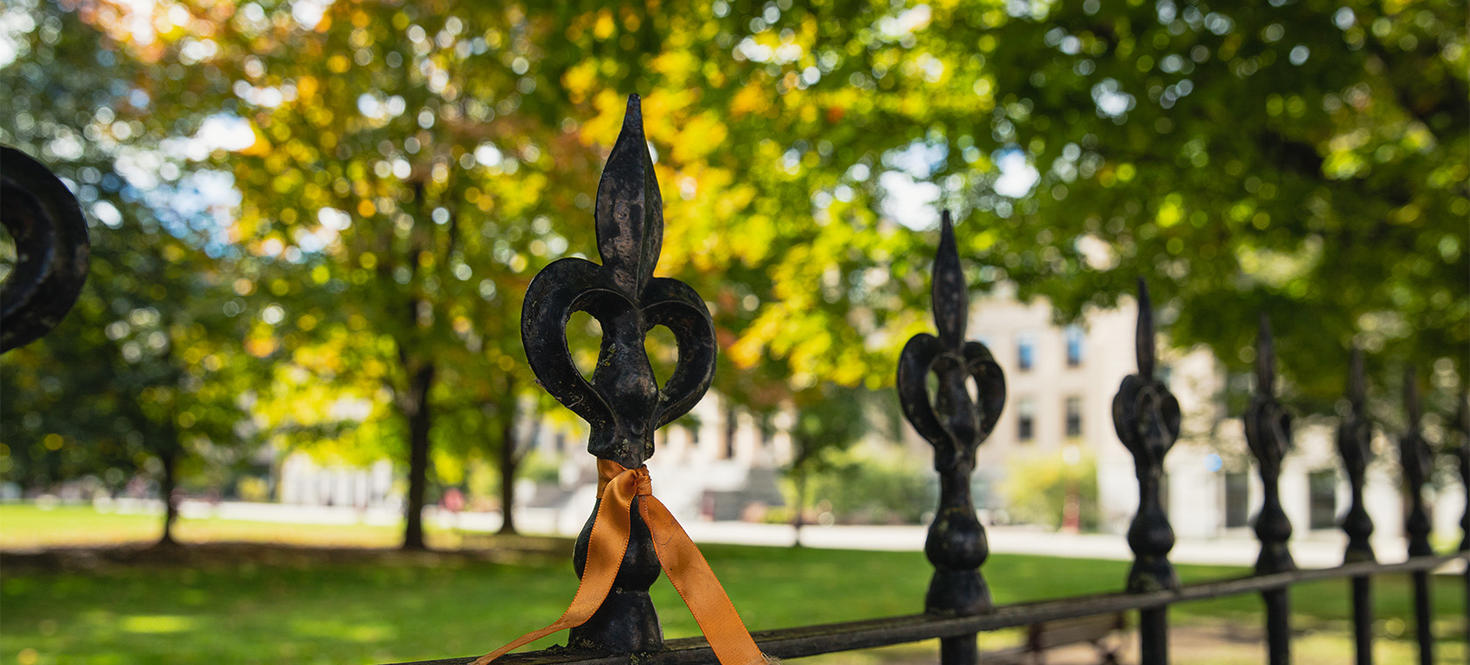
1. Attend the uOttawa National Day for Truth and Reconciliation ceremony
The event on September 29 at 9:30 a.m. will feature testimonials from Indigenous students. University leaders will be present and elements of traditional culture will be highlighted. It will be followed by a community feast. Everyone is encouraged to wear orange. Wearing orange on September 30 began in 2013 as a grassroots movement inspired by the story of Phyllis Jack Webstad, whose personal clothing — including a brand-new orange shirt — was taken from her on her first day of residential schooling and was never returned. She was six.

2. Read about Chancellor Claudette Commanda’s journey
In case you missed this — or perhaps didn’t know — Claudette Commanda, an Algonquin Anishinaabe from the Kitigan Zibi Anishinabeg First Nation and a uOttawa alumna (BA ’93, LLB ’97), became our first Indigenous chancellor this year. The chancellor is the titular head of the University, and occupies the place of honour at ceremonies — she might hand you your diploma when you graduate.

3. Visit the Indigenous Spirit Gardens on campus
The Spirit Garden on the outdoor terrace off the third floor of the Faculty of Law’s Fauteux Hall grows traditional Indigenous medicines and sacred plants. The garden has semaa (tobacco), mshkwoodewashk (sage), zhgob (cedar) and wingushk (sweetgrass) — the “four sacred medicines” used in ceremonies. The Faculty of Social Sciences has also opened an Indigenous Garden to commemorate the National Day of Truth and Reconciliation. These are just two places to discover.

4. Reflect on Indigenous art
The sculpture on the Tabaret lawn, titled She dances with the earth, water and sky and unveiled in 2019, represents the relationship founded on truth and reconciliation between uOttawa, the Algonquin Nation and all Indigenous people in the National Capital Region and in Canada.
A more recent addition is a large mural depiction of Anishinaabe water law at the Faculty of Law’s Fauteux Hall on the third floor.
These are just a couple of examples. There’s more to explore within the faculties and as you walk around campus.

5. Follow @uottawaindigenous on Instagram!
Indigenous issues and events don’t just take place around September 30 or National Indigenous History Month in June. Learn more about the Mashkawazìwogamig Indigenous Resource Centre, a culturally safe space offering academic and wellness-based programs to First Nations, Inuit and Metis students. Friendly centre staff often host events that offer a chance to learn more about the community. Stay connected.
